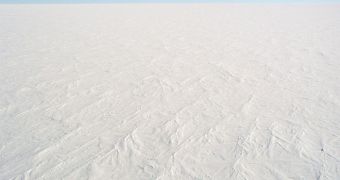Experts from the Lunar & Planetary Institute say that they may have discovered the remnants of long-destroyed world beneath the ices of Antarctica. The rocks they uncovered appear to have originated in a dwarf planet-sized object that no longer exists in the solar system.
What this implies is that the space rock was destroyed at one point, spreading its material throughout the inner solar system. Astronomers believe that some of that matter may now be orbiting inside the Inner Asteroid Belt.
Additional amounts may be scattered on other planets and moons, whereas other quantities still may have burned up in the Sun. As the pair of Antarctic rocks indicate, some of the debris also made their way at Earth's South Pole.
The new discovery again demonstrates that the early solar system was a very violent place, where cosmic collisions were the norm rather than the exception. Even today, experts estimate that more than a thousand dwarf planets still orbit the Sun at various distances.
While the International Astronomical Union (IAU) recognizes only five – Pluto, Eris, Ceres, Makemake and Haumea – the organization is currently researching the status of 40 more. There is no doubt in the minds of astronomers that many more such space rocks await discovery.
As such, it stands to reason that even more of these worlds were produced in the earliest days of the solar system. One of them is believed to have collided with Earth, leading to the creation of the Moon.
Speaking of the Antarctic discovery, LPI expert Allain Treiman says that “this is a piece of a dwarf-planet size body that apparently no longer exists. We have here a sample of a strange new world, a sample we've never seen before.”
Constantly, analysts say, people forget that the current setup of the solar system is the result of a long battle between the many celestial objects that were formed shortly after the Sun. The planets, asteroids and comets that endure today are the survivors of those rough times.
The Inner Asteroid Belt itself is the result of massive space collisions, as are Mars' two moons, the Kuiper Belt and the Oort Cloud, at the edge of the solar system. Finding out why the surviving planets arranged themselves the way they did is a major goal for astronomers.
Investigators now plan to conduct in-depth analysis of the recovered fragments. They hope to be able to collect new data on the object, perhaps even determining its age and inner structure, Daily Galaxy reports.

 14 DAY TRIAL //
14 DAY TRIAL //